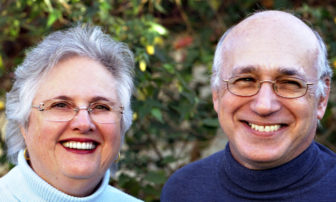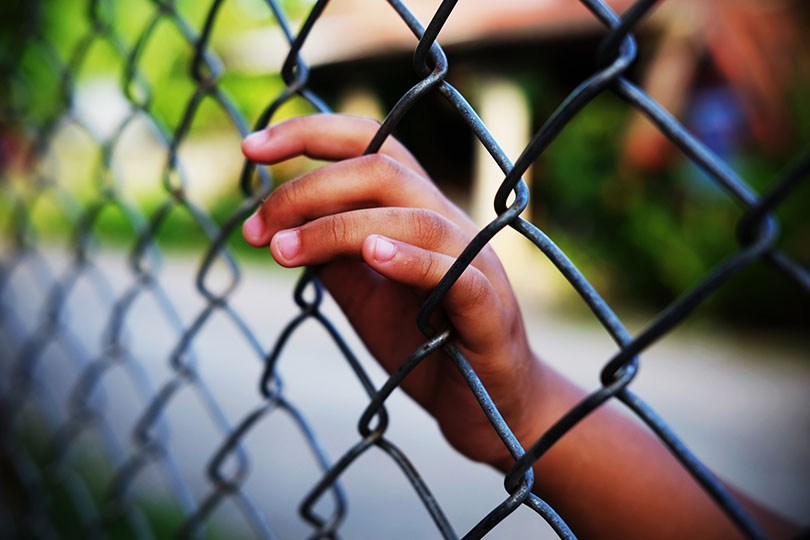By Paula and Larry Bitt
Juvenile Justice Information Exchange
All children make mistakes, and sometimes those mistakes get them in trouble with the law. It happens in all kinds of families and in all kind of neighborhoods.
But when the upper-middle class, mostly white kids we knew as our children and grandchildren were growing up made questionable decisions, they often had resources to help them avoid the youth justice system. They got second chances, learned from their mistakes and were able to recover without serious repercussions.
We have spent our lives as activists, philanthropists and practitioners of civil rights law, witnessing the disproportionate and devastating impacts of the criminal justice system on poor communities of color. Data prove our anecdotal experiences.
 According to the Lucile Packard Foundation for Children’s Health, Latino youth are arrested at double the rate of white kids in Los Angeles County. For black youth, the rate is 10 times higher. While black and Latino kids are about as likely to get into fights or steal property as their white counterparts, disparity is driven by the way adults respond to those and other behaviors.
According to the Lucile Packard Foundation for Children’s Health, Latino youth are arrested at double the rate of white kids in Los Angeles County. For black youth, the rate is 10 times higher. While black and Latino kids are about as likely to get into fights or steal property as their white counterparts, disparity is driven by the way adults respond to those and other behaviors.
For instance, students of color are more likely than white students to attend campuses with “school resource officers” who have the ability to make arrests. And when black and Latino students get into trouble, they are far more likely to land in the youth justice system than white students.
It’s no surprise that the state prison system reflects these same disparities, and that America’s jails and prisons are disproportionately populated by people of color. In order to disrupt the cycle of imprisonment, we need to focus on youth arrest and incarceration policies.
Los Angeles County has made a historic commitment to transform its youth justice system by investing $26 million in programs to keep kids out of prison, and instead place them into community-driven, prearrest diversion programs. Currently, Los Angeles County pays more than $250,000 a year to keep one young person in prison, and the consequences are long-lasting. More than 30 percent of incarcerated youth are likely to return to the system within a year, and imprisonment increases the likelihood that a young person will drop out of high school, go to prison as an adult or face prolonged unemployment.
That same $250,000 could fund diversion programs for 50 young people, where the rate of return to the system is only 11 percent. In other words, keeping children out of the system altogether is three times more effective than incarcerating them and is a fraction of the cost. Investing in alternatives to youth incarceration is not only fiscally smart — it is the right thing to do.
This is a big step for Los Angeles County, which currently operates the nation’s largest youth prison and probation system. By making the right changes here, we can build a national model for transformative youth justice that makes communities safer while saving money.
Philanthropic and community organizations have played a significant role in nudging elected officials in this direction. Foundations such as Liberty Hill(where Paula sits on the board of directors) and The California Endowment have made significant investments in community-based programs to demonstrate that a supportive and educational environment works better than prison.
During the 1990s, California led the wave of “tough-on-crime” policies that are now recognized as disproportionately and unjustifiably detrimental to people of color. Now California is advancing solutions to address these failed policies. Gov. Jerry Brown recently signed a slate of bills that increase parole opportunities and reduce punishments for crimes committed by young people. Still, far too many children become caught up in a cycle of crime and imprisonment that could be disrupted by addressing the root causes that push them toward trouble in the first place.
It is also time for public agencies to channel funds toward solutions with proven track records of decreasing demand for youth prisons. As a result, prisons could be closed and money could be reinvested in preventive programs that give all youth a fair chance for success.
Such community diversion programs provide mental health assistance, networks of supportive adults, jobs and educational opportunities. Most importantly, effective diversion programs are based on restorative justice, which emphasizes accountability for one’s actions and repairing damage, rather than punishment. Diversion programs rooted in restorative justice make a powerful statement that we believe in our youth enough not to lock them out of a future, while at the same time creating a greater sense of justice for both victims and offenders.
In my family, we know second chances work because we have experienced them. Counseling and community volunteer work were much more effective than prison time in helping kids in my family heal and learn the lessons they needed to learn. Now those children are successful adults. A second chance should not be a privilege available only to white youth whose families have resources and legal assistance. The opportunity for redemption should be a right for all.
We need our young people — all of them. Los Angeles has a responsibility to show that there is a better way to give our youth a chance for a brighter future. Youth justice reform is a critical step in tackling the unfair burden that the criminal justice system has placed on communities of color. With the right investments and policies, we can make youth prisons a thing of the past.
Barry Litt has been a prominent civil rights attorney for 48 years, and Paula Litt serves on the Board of the Liberty Hill Foundation, where she also volunteers her time. They have both been involved in social justice issues for over 50 years.
The California Endowment funds coverage in California for Youth Today and the Juvenile Justice Information Exchange.



